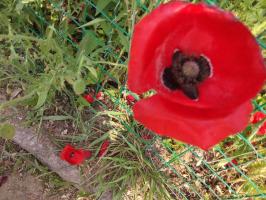1、 Seed taking
The seeds of this plant are not resistant to release. It is recommended to sow after harvest. If you find that the fruit changes from fresh green to yellow, you can pick the seeds in the yellow fruit. If you don't pick them for too long, they will crack themselves. At that time, seeds that had not been planted could be soaked in gibberellin and stored in wet sand, but the budding rate would decline in the second year and the budding time was inconsistent

2、 Sowing time
Generally, the temperature rises in spring, and it is best in March and April. It can be sown directly or cultivated
3、 Sowing method
1. Select the soil with soft soil, drainage and ventilation for trimming, remove stones and weeds, make a seedbed, dig several ditches with a depth of 5 cm at a distance of about 25 cm, fill with appropriate amount of water, and sow the seeds at an interval of 10 cm
2. Gently press the seeds with your toes or cover them with thin soil. After covering the soil, cover the soil surface with straw mat or straw. This can reduce water loss. The straw can be gently lifted on time and replenished in time after water shortage. After the seedlings rise, the straw mat can be removed

4、 Later maintenance
1. After the seeds grow seedlings, they should be properly irrigated. When the soil fertility is insufficient, they also need to be fertilized. Nitrogen fertilizer can be applied, and it can be fertilized once at the seedling stage
2. In April of the second year of planting, when the seedlings grow up, they can be planted. Sandy soil or humus soil shall be selected as the soil for colonization, and base fertilizer shall be added for planting at a distance of 40 * 30 cm. Nitrogen fertilizer can be added twice during the period from colonization to flowering
3. During the seedling period, pay attention to shade, like wet and fertile environment, and long-term sunlight will lead to leaf water loss. Although I like to be wet, too much ponding can also lead to plant death

 how many times do yo...
how many times do yo... how many planted tre...
how many planted tre... how many pine trees ...
how many pine trees ... how many pecan trees...
how many pecan trees... how many plants comp...
how many plants comp... how many plants can ...
how many plants can ... how many plants and ...
how many plants and ... how many pepper plan...
how many pepper plan...































